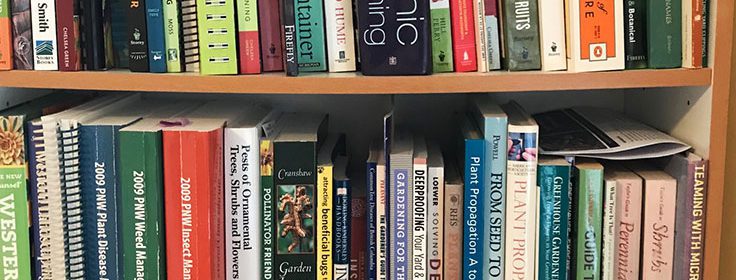Book Review: Starting and Saving Seeds

 Starting & Saving Seeds: Grow the Perfect Vegetables, Fruits, Herbs and Flowers for Your Garden by Julie Thompson-Adolf (Cool Springs Press, 2018, 160 pp., $25)
Starting & Saving Seeds: Grow the Perfect Vegetables, Fruits, Herbs and Flowers for Your Garden by Julie Thompson-Adolf (Cool Springs Press, 2018, 160 pp., $25)
Two of the most important and useful gardening skills are knowing how to start your plants from seed and saving seeds. Yet those two skills — especially the latter — are ones that many gardeners shy away from, thinking they are too complicated or challenging.
Fortunately, Julie Thompson-Adolf’s new book, Starting & Saving Seeds, covers all of the essential aspects of both in an easy-to-understand manner.
In part one of the book, Thompson-Adolf provides a good foundation of knowledge so readers can get started.
The first chapter covers the many wonderful reasons for starting plants from seed: for more variety options, to save money, and to make a connection with history or other cultures, for example. The author introduces some botanical terms and seed terminology — open-pollinated, heirloom, hybrids — and busts the myth about GMO seeds (spoiler alert: we home gardeners don’t have access to them).
 In chapter two, “Starting Seeds,” she details the supplies needed, best practices and practical recommendations to keep things simple. As an example, Thompson-Adolf explains “there’s no need to purchase more expensive plant lights.” She also provides information on how to handle seeds that need a little extra help to germinate.
In chapter two, “Starting Seeds,” she details the supplies needed, best practices and practical recommendations to keep things simple. As an example, Thompson-Adolf explains “there’s no need to purchase more expensive plant lights.” She also provides information on how to handle seeds that need a little extra help to germinate.
In addition to step-by-step instructions on starting seeds indoors, the author also covers direct-sowing seeds in the garden, winter seed-sowing, and how to make your own seed tape and seed bombs.
Chapter three, “From Seedlings to Plants to Saving Seeds,” Thompson-Adolf provides important information on how to keep your seedlings growing well after they’ve been started indoors but before it’s time for them to go out to the garden. This makes a huge difference in how well they grow! Readers will learn how to up-pot them as well as what to do before planting them outdoors, including the all-important hardening-off process.
Thompson-Adolf covers what seed-savers need to do to ensure they are saving viable, pure seeds, and taking steps to avoid cross-pollination. The latter involves bagging flowers or caging plants with row cover fabric. Then she explains how to harvest seeds and process them, then store them properly for future plantings.
In part two, “Meet the Plants,” Thompson-Adolf has provided an extensive guide to saving and planting seeds from fruits, vegetables, herbs and flowers.
Readers will learn the sowing depth, the type of “capsule” that holds the seeds, any specific care seeds require to germinate well, optimum soil temperature, timing, light requirements, when to transplant the seedlings into the garden, the number of days each type of seed takes to germinate, the days to maturity, how they are pollinated, if they might cross-pollinate with other cultivars and how to prevent this, when to save the seeds, how to process them, and the average time the seeds remain viable.
As you can see, this book represents a great deal of research and experience on the author’s part. If you have hesitated to save seeds in the past, this book should put your mind at ease and give you the encouragement you need to get started.
In the last section of the book, Julie Thompson-Adolf provides useful resources for locating seeds and seed-starting supplies, as well as seed-saving organizations worth connecting with.
So if you are ready to learn how to start your plants from seeds — or increase your skills for better success — or dive into saving seeds, Starting & Saving Seeds is an excellent place to begin.
